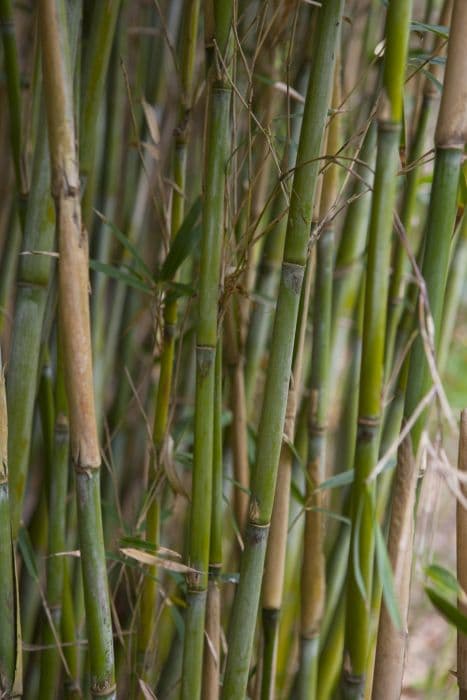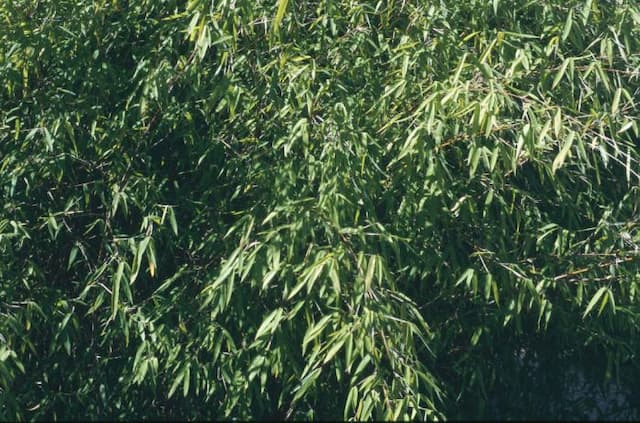Purple Lovegrass Eragrostis spectabilis






ABOUT
The plant commonly known as Purple Lovegrass is a visually striking perennial grass that features a dense tuft of upright, narrow leaves. During the warmer months, these leaves transition from a bright green color to a purplish-red hue as the seasons change, which adds a delightful splash of color to any landscape. The most characteristic aspect of Purple Lovegrass is its wispy, cloud-like seed heads. These billowy structures emerge in midsummer and envelop the plant in a hazy, purple-pink mist, which seems to float above the foliage like an ethereal veil. As the seeds mature, they take on a warm bronze tone, extending their visual impact into the fall. This transformation of colors throughout the seasons allows the Purple Lovegrass to offer a dynamic and shifting aesthetic to its surroundings. The delicate appearance of this plant belies its resilient nature, making it a popular choice for adding texture and movement to gardens and naturalized areas.
About this plant
 Names
NamesFamily
Poaceae.
Synonyms
Purple Lovegrass, Tumble Grass, Petticoat Climber, Sandy Lovegrass, Tumbleweed Grass.
Common names
Poa spectabilis, Eragrostis purpurascens, Eragrostis spectabilis var. purpurascens.
 Toxicity
ToxicityTo humans
Purple lovegrass (Eragrostis spectabilis) is not commonly known to be toxic to humans. There are no significant reports or indications that consuming or contacting this plant poses poisonous risks or that it would cause symptoms of toxicity. As with any plant, individual sensitivities or allergic reactions are possible, but generally, Eragrostis spectabilis is considered safe regarding human toxicity.
To pets
Purple lovegrass is not commonly known to be toxic to pets. There is no widespread evidence or documentation that suggests this plant poses a risk of poisoning if ingested by animals such as dogs or cats. It is considered non-toxic, and ingestion should not lead to any serious symptoms of poisoning. However, as with all plants, pets may still have individual allergic reactions or gastrointestinal upset if they consume a significant amount of the plant.
 Characteristics
CharacteristicsLife cycle
Perennials
Foliage type
Deciduous
Color of leaves
Green
Flower color
Pink
Height
1-3 feet (0.3-0.9 meters)
Spread
1-2 feet (0.3-0.6 meters)
Plant type
Herb
Hardiness zones
5
Native area
North America
Benefits
 General Benefits
General Benefits- Attracts Wildlife: Eragrostis spectabilis, commonly known as Purple Lovegrass, often attracts birds and butterflies, making it an ideal choice for wildlife gardens.
- Drought Tolerance: Purple Lovegrass is highly resistant to drought, requiring minimal water once established, which can be particularly beneficial in arid climates or during water restrictions.
- Erosion Control: With its extensive root system, Purple Lovegrass helps to stabilize soil and prevent erosion, especially on slopes or in areas with loose soil.
- Low Maintenance: It requires little upkeep beyond the initial planting, which is perfect for gardeners looking for low-maintenance landscaping options.
- Aesthetic Appeal: The reddish-purple tinge to its foliage and fluffy seed heads in late summer and fall provide decorative, aesthetic appeal to gardens and landscapes.
- Adaptable Growth: This plant is adaptable to a wide range of soils, from well-drained sandy soils to clay, making it versatile for different garden conditions.
- Habitat Restoration: Purple Lovegrass is often used in restorative plantings and prairie restorations due to its native status and ability to thrive in poor soils.
- Ground Cover: Its dense growth habit makes it effective as a ground cover, filling in large spaces and providing a consistent texture in landscape designs.
- Seasonal Interest: It provides visual interest throughout multiple seasons, with green growth in spring and summer and attractive seeding stages in the fall.
- Non-Invasive: Unlike some other ornamental grasses, Purple Lovegrass is not considered invasive, making it a responsible choice for ecological gardening.
 Medical Properties
Medical PropertiesThis plant is not used for medical purposes.
 Air-purifying Qualities
Air-purifying QualitiesThis plant is not specifically known for air purifying qualities.
 Other Uses
Other Uses- Erosion Control: Eragrostis spectabilis, commonly known as Purple Lovegrass, is often used in soil stabilization projects to prevent erosion due to its extensive root system.
- Xeriscaping: Due to its drought tolerance, Purple Lovegrass is utilized in xeriscaping to create sustainable landscapes that require minimal water.
- Wildlife Habitat: Purple Lovegrass provides habitat and food for various wildlife, including birds and butterflies, enhancing biodiversity.
- Decorative Displays: The attractive reddish-purple clouds of seed heads make Purple Lovegrass a popular choice for dried flower arrangements.
- Fall Coloration: The foliage of Purple Lovegrass adds a reddish hue to fall landscapes, making it desirable for seasonal garden interest.
- Green Roofs: Its hardiness and low maintenance make it suitable for planting on green roofs, where conditions are harsh and growing traditional plants is challenging.
- Natural Borders: Gardeners use Purple Lovegrass to create informal borders and divisions within naturalistic garden designs.
- Education: It's used in educational settings such as schools and botanical gardens to teach about native grasses and their roles in local ecosystems.
- Thatching Material: In some areas, the dried grass of Purple Lovegrass is used for thatching roofs in traditional building techniques.
- Crafts: The distinctive seed heads are sometimes used in making crafts such as wreaths and ornamental displays.
Interesting Facts
 Feng Shui
Feng ShuiPurple lovegrass is not used in Feng Shui practice.
 Zodiac Sign Compitability
Zodiac Sign CompitabilityPurple lovegrass is not used in astrology practice.
 Plant Symbolism
Plant Symbolism- Love and attraction: Eragrostis spectabilis, commonly known as Purple Love Grass, often symbolizes strong emotions due to its vibrant, purplish hue which is frequently associated with love and passion.
- Persistence: The plant's ability to grow in tough, arid conditions and poor soils is seen as a sign of its resilience and symbolizes persistence and the ability to thrive despite challenges.
- Unity: The dense, clustered growth pattern of the Purple Love Grass seed heads can symbolize unity and togetherness, as they stand tightly together on the stem.
- Beauty in simplicity: Purple Love Grass is not flashy or excessively showy, symbolizing an appreciation for the understated beauty and the elegance of simplicity.
 Water
WaterPurple lovegrass prefers dry to medium moisture levels and well-drained soil, making it somewhat drought-tolerant once established. Water the grass deeply once a week during the first growing season to help establish an extensive root system, providing about 1 inch of water each session. After establishment, reduce watering frequency, allowing the soil to dry out slightly between waterings. During prolonged dry spells or extreme heat, water the grass every two to three weeks with approximately 1 to 1.5 gallons per square yard, depending on the soil type and weather conditions. Overwatering can lead to root rot, so ensure the plant is never sitting in soggy soil.
 Light
LightPurple lovegrass thrives in full sun, which means it needs at least 6 to 8 hours of direct sunlight each day for optimal growth and flowering. The ideal spot for this plant is an area where it receives unfiltered, direct sunlight throughout the day without significant shade from trees or buildings. The intensity of light should be strong and consistent to encourage the densest growth and the most vibrant blooms.
 Temperature
TemperaturePurple lovegrass is hardy and can tolerate a wide range of temperatures, but it grows best in areas with average temperatures between 60 to 75 degrees Fahrenheit. It can survive minimum winter temperatures down to about -20 degrees Fahrenheit and can handle summer heat well above 90 degrees Fahrenheit, making it suitable for various climates. The ideal temperature for this grass promotes active growth and seed production.
 Pruning
PruningPurple lovegrass benefits from occasional pruning to remove old, dead foliage and to encourage fresh growth. The best time to prune is in late winter to early spring, just before new shoots begin to emerge. Cut back the entire plant to about 4 inches above the ground every year or two. This rejuvenates the plant, maintains a tidy appearance, and promotes vigorous, healthy new growth.
 Cleaning
CleaningAs needed
 Soil
SoilPurple lovegrass thrives in well-drained soil with a mix of sand, loam, and compost. The best soil pH for this grass is between 6.0 to 7.5, slightly acidic to neutral.
 Repotting
RepottingPurple lovegrass does not often require repotting; it can be repotted every 2 to 3 years or when it outgrows its current container.
 Humidity & Misting
Humidity & MistingPurple lovegrass prefers moderate humidity levels but is quite adaptable and can tolerate a range of humidity conditions common in most homes.
 Suitable locations
Suitable locationsIndoor
Place Purple lovegrass in bright light, dry soil.
Outdoor
Plant in full sun, well-drained soil.
Hardiness zone
4-9 USDA
 Life cycle
Life cycleEragrostis spectabilis, commonly known as Purple Lovegrass, begins its lifecycle when its seeds germinate in spring, requiring warmth and sufficient moisture. The seedlings emerge and establish a small rosette of leaves at the soil surface. Throughout the growing season, the plant develops a fibrous root system and elongates to produce characteristic reddish-purple inflorescences by late summer. After flowering, Purple Lovegrass sets seed, which are dispersed by wind and animals, ensuring the proliferation of new plants. As a perennial, it survives the winter in a dormant state, with its foliage dying back to the ground, to regrow from its root system when favorable conditions return. Over successive years, clumps may enlarge, and the plant can also spread by self-seeding, completing its life cycle.
 Propogation
PropogationPropogation time
Spring to summer
Eragrostis spectabilis, commonly known as Purple Lovegrass, is best propagated using its seeds. The ideal time to sow Purple Lovegrass seeds is in the spring after the danger of frost has passed, which ensures that the ground temperature is sufficiently warm for seed germination, typically around 70 degrees Fahrenheit (approximately 21 degrees Celsius). To propagate, the seeds should be scattered directly onto a prepared soil surface where they need light to germinate so they should not be covered. However, they need to be pressed into the soil to ensure good seed-to-soil contact. Keep the area moist until germination occurs, which is usually within 2 to 3 weeks. Thinning may be necessary to give each plant enough space to grow once the seedlings have emerged and are large enough to handle.









